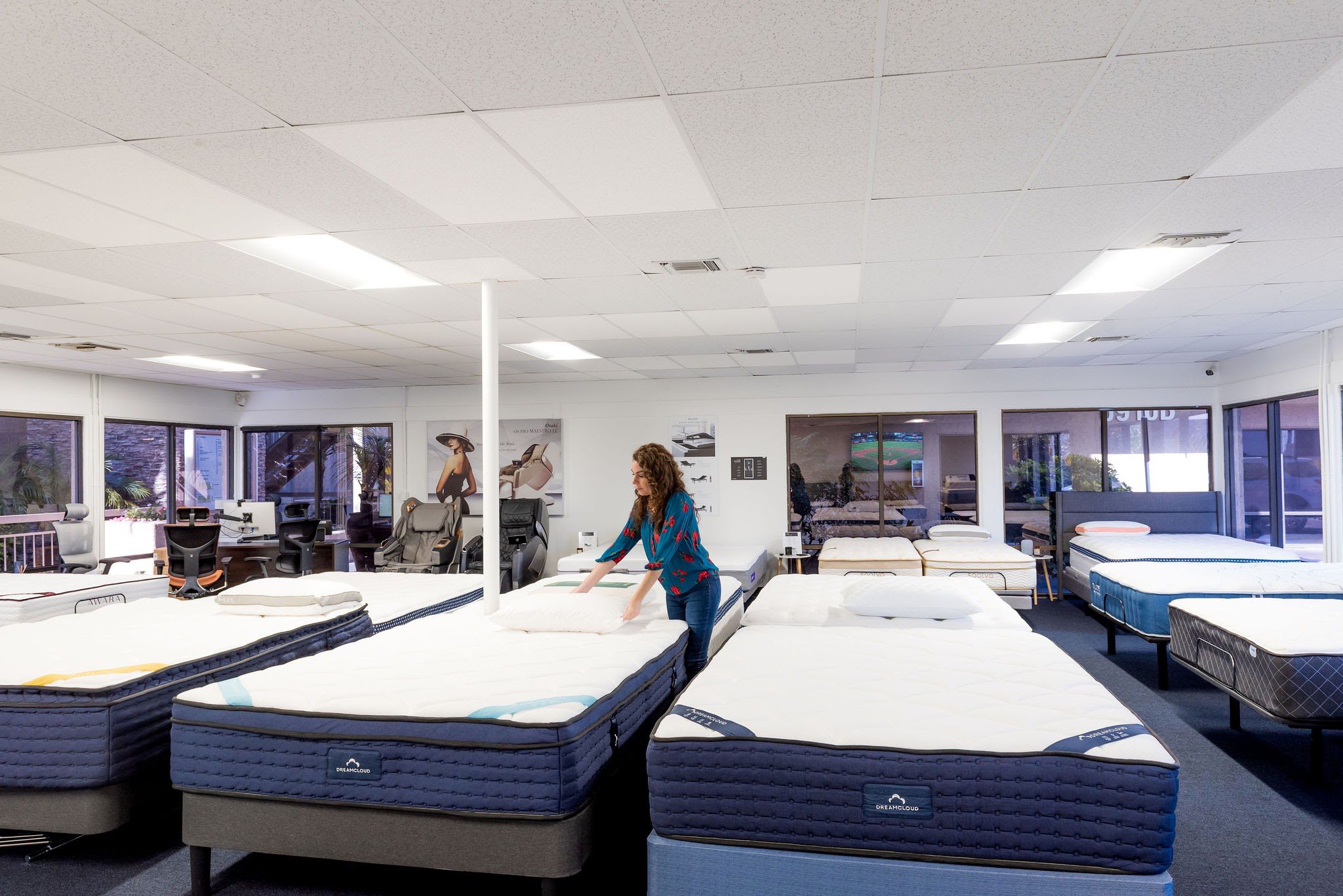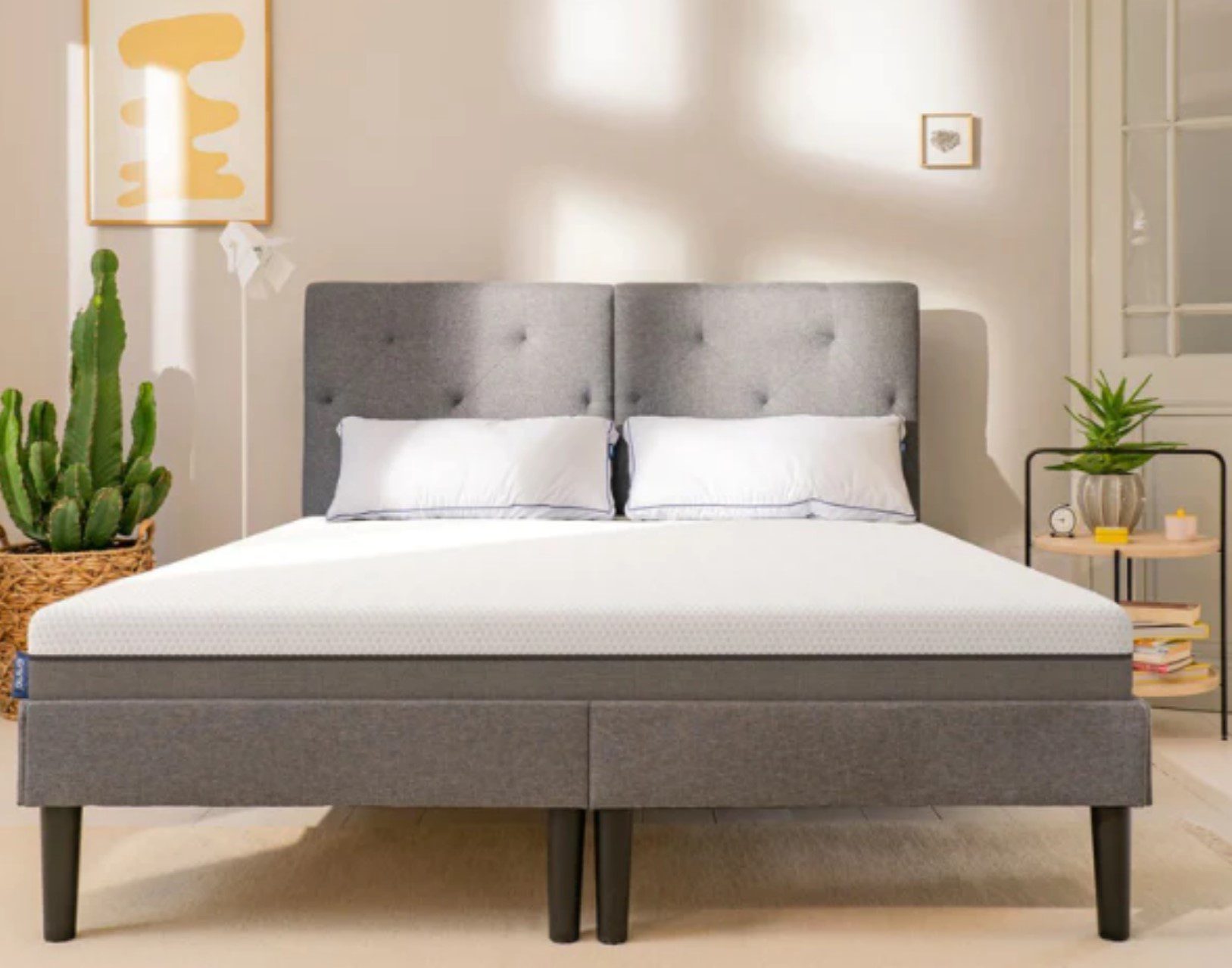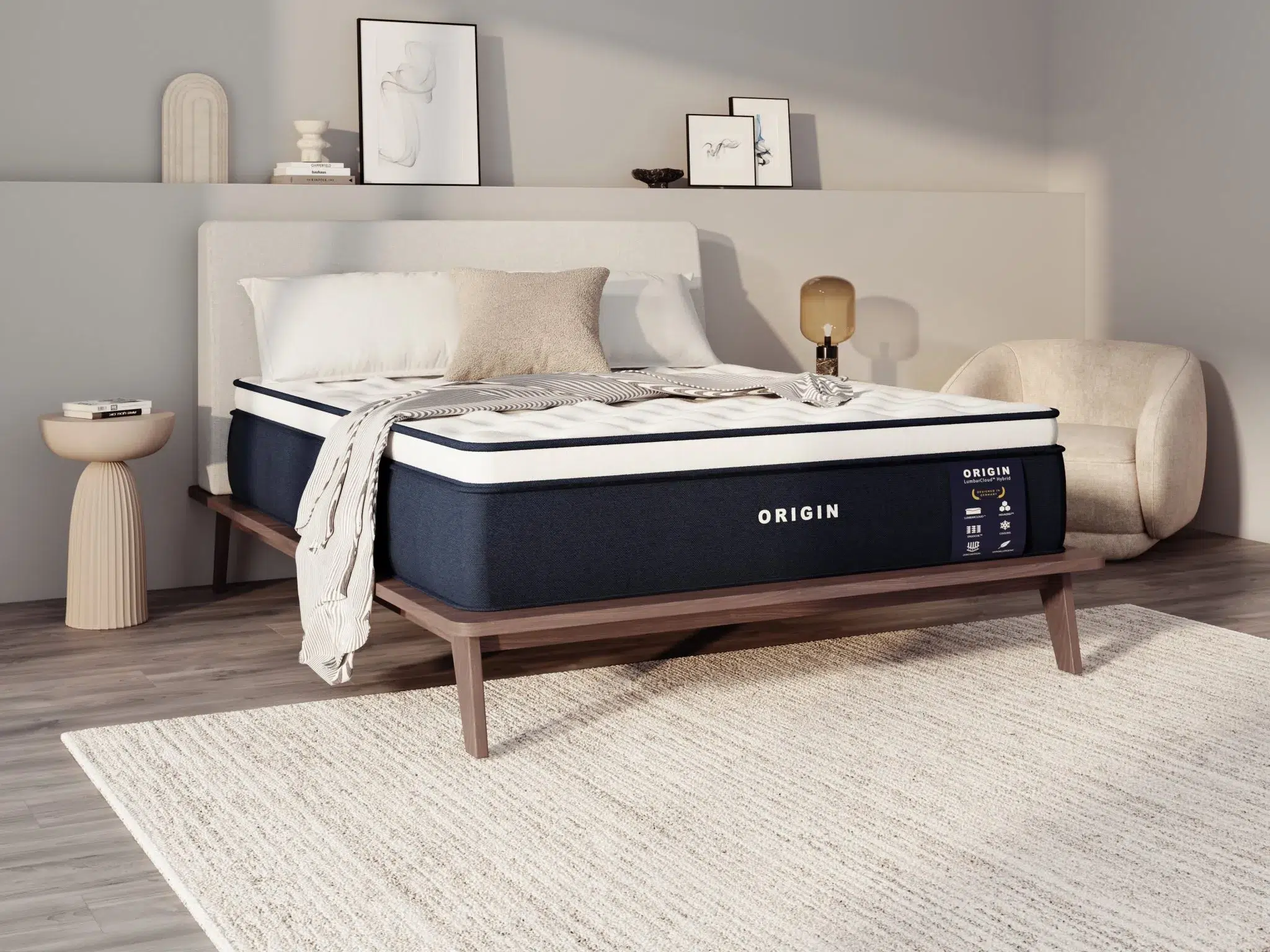|
||
|
||
|
What’s the Best Memory Foam Mattress for You?
Since 2015, there has been an explosion of online mattresses. The vast majority of these mattresses are memory foam. That’s because new roll packing technology has made it easy to compress and wrap them so that they fit in a box that can be shipped by UPS and FedEx. Many of these memory foam mattresses consist of 3 layers of foam and a zippable knit ticking. Below are some of the mattresses that I have tested so far. It can be hard to know how these mattresses will feel without trying them out first but in my reviews, I show you how the foam reacts so you have a better sense of what to expect.
Keep in mind I there are dozens of mattresses I have tried that aren’t on this site or aren’t in the rankings. I found these memory foam mattresses to be particularly notable. And in my opinion are some of the best memory foam mattresses you can buy given their feel, price and trial period.
Is there a Best Memory Foam Mattress?
According to the Better Sleep Council, currently 16% of Americans are sleeping on a memory foam mattress.
A key selling point to many of these mattresses is their free trial period. Traditional mattress stores may charge a restocking fee or may make you choose another mattress in their showroom as an exchange. That’s a lousy deal because the reason you chose your first mattress is because you thought it was the best, you would then need to settle for your second choice.
Here is a list of my top memory foam mattress picks. This list is frequently updated.
If you have any questions about these mattresses, please reach out to me direct at: [email protected]
All Foam Mattress Reviews
-
 $1,099 (Queen)Buy Now
$1,099 (Queen)Buy NowThis medium-firm mattress is engineered to facilitate healthy spinal alignment. Verywell Health even calls it the best mattress for back pain. If you're a back or stomach sleeper, the AS2 is perfect for you.
We earn a commission if you make a purchase, at no additional cost to you.
-
 $649Buy Now Our Review
$649Buy Now Our ReviewGreat cooling and comfort at an amazing value. With over 10,000 reviews, it's a proven winner.
We earn a commission if you make a purchase, at no additional cost to you.
-
-
 Check Price Our Review
Check Price Our ReviewSuperior airflow with aerated foams and a breathable knit cover.
We earn a commission if you make a purchase, at no additional cost to you.
-
 $749 (Queen)Buy Now Our Review
$749 (Queen)Buy Now Our ReviewThe supportive feel of premium memory foam so comfortable, you won't want to get out of bed! High-quality craftmanship at an incredible value.
We earn a commission if you make a purchase, at no additional cost to you.
-
 Buy Now
Buy Now$139.99$130.56We earn a commission if you make a purchase, at no additional cost to you.
09/04/2025 12:10 pm GMT -
 Check Price Our Review
Check Price Our ReviewUltra-premium 5-lb memory foam mattress that strikes the perfect balance of comfort, support, and luxury.
We earn a commission if you make a purchase, at no additional cost to you.
-
-
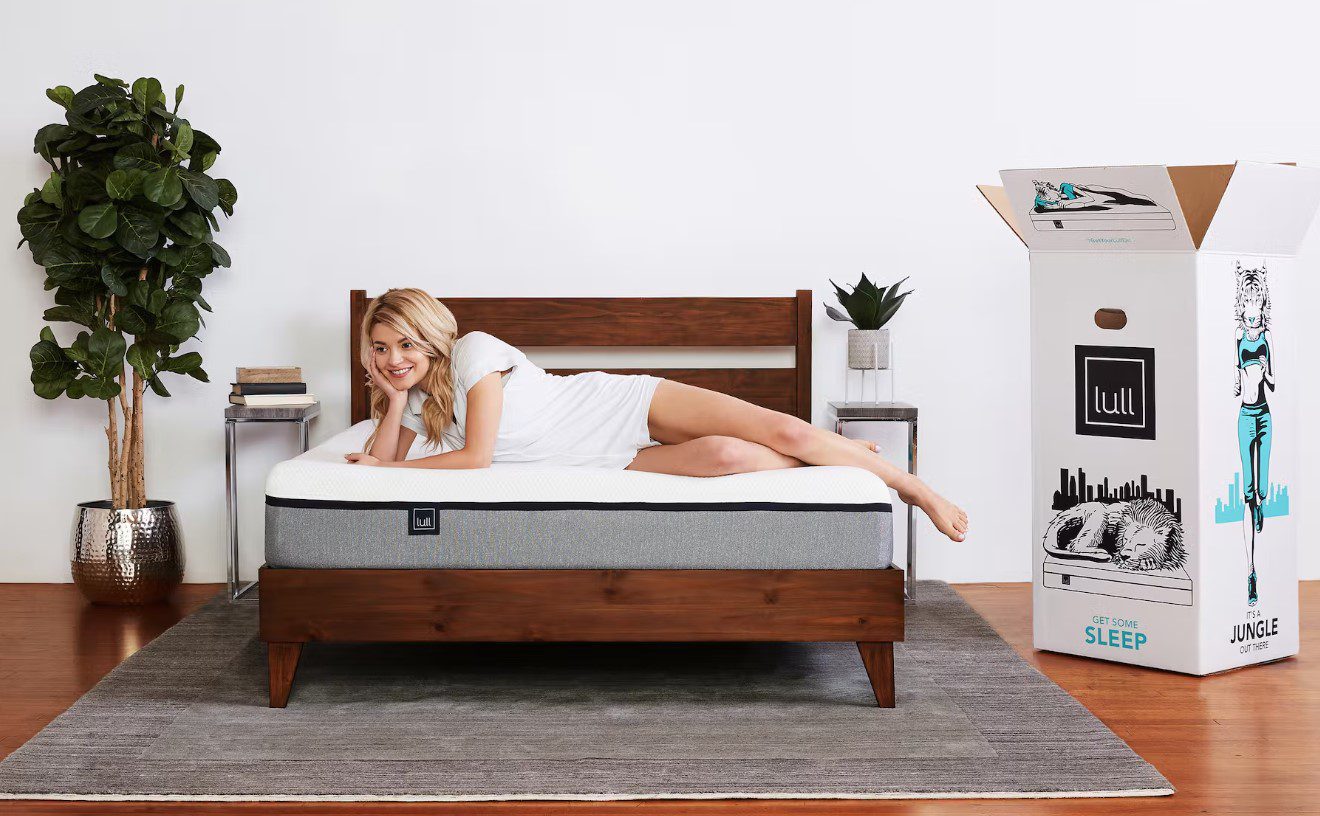 Check Price Our Review
Check Price Our ReviewComfortable and supportive: The Lull mattress is super cozy and has just the right amount of support. You'll sink into the gel-infused memory foam top layer, while the pocketed coil layer keeps you from sinking too far. Get 35% off your Lull Mattress
We earn a commission if you make a purchase, at no additional cost to you.
-
 $899Check Price Our Review
$899Check Price Our ReviewExperience MOLECULE Air-Engineered™ comfort and temperature regulation at an affordable price with MOLECULEshield™ antimicrobial treatment cover. o
We earn a commission if you make a purchase, at no additional cost to you.
-
 $1,295 (Queen)Buy Now Our Review
$1,295 (Queen)Buy Now Our ReviewMuse is a cooling memory foam mattress created specifically with consumers' needs in mind. Four layers of premium gel-infused, memory foam are wrapped in a removable, washable cover to create a 12” mattress that offers unparalleled comfort, pressure relief & temperature regulation.
We earn a commission if you make a purchase, at no additional cost to you.
-
 $699 (Queen)Buy Now Our Review
$699 (Queen)Buy Now Our ReviewPremium memory foam mattress cradles your body and keeps you cool. Made with CertiPUR-US® certified foams. Free shipping & returns, with a 365-night Home Trial.
We earn a commission if you make a purchase, at no additional cost to you.
-
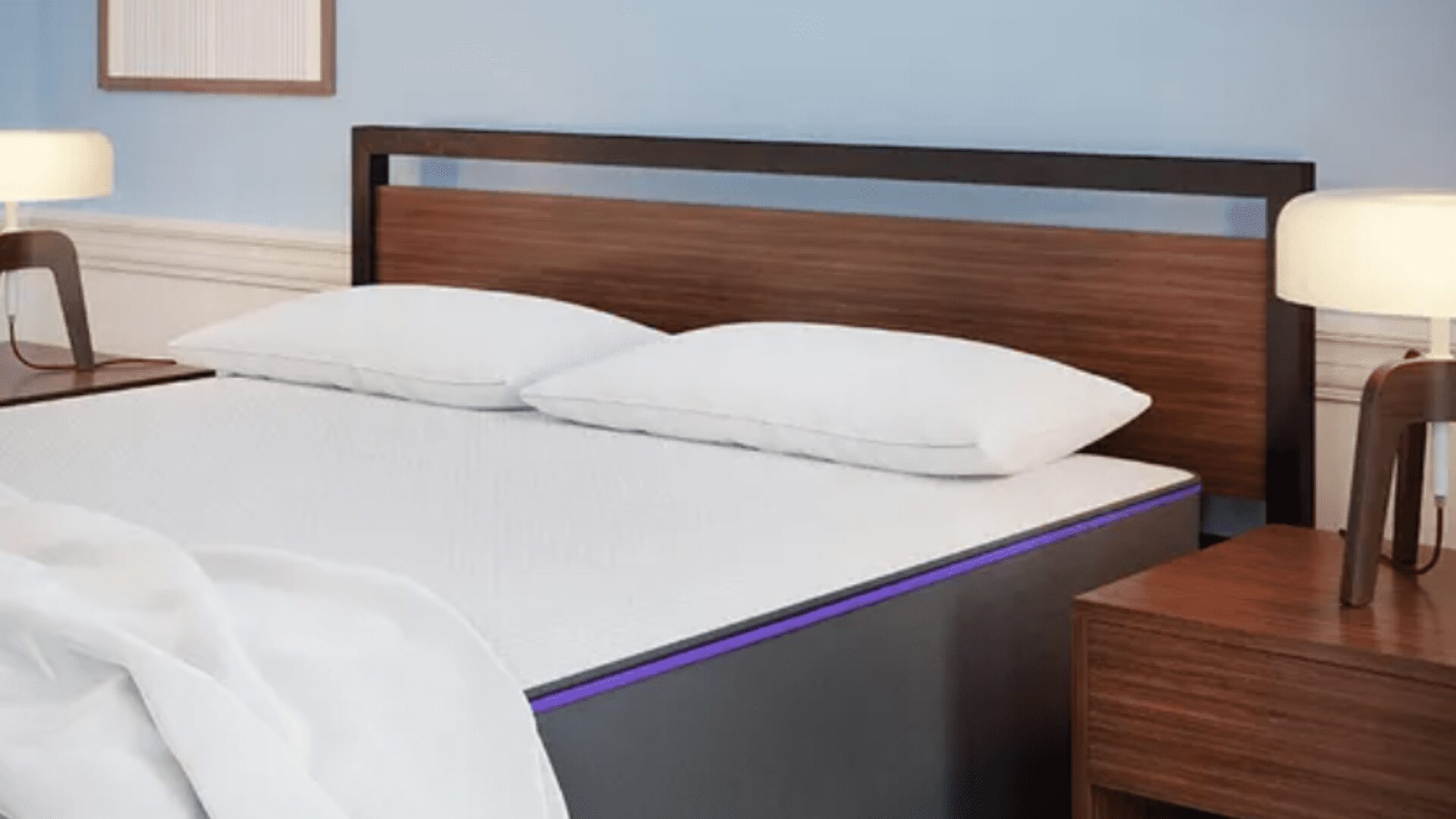 $1,041.64Check Price Our Review
$1,041.64Check Price Our ReviewThe perfect blend of support and pressure relief. A phase change cover keeps you at an optimal temperature all night.
We earn a commission if you make a purchase, at no additional cost to you.
-
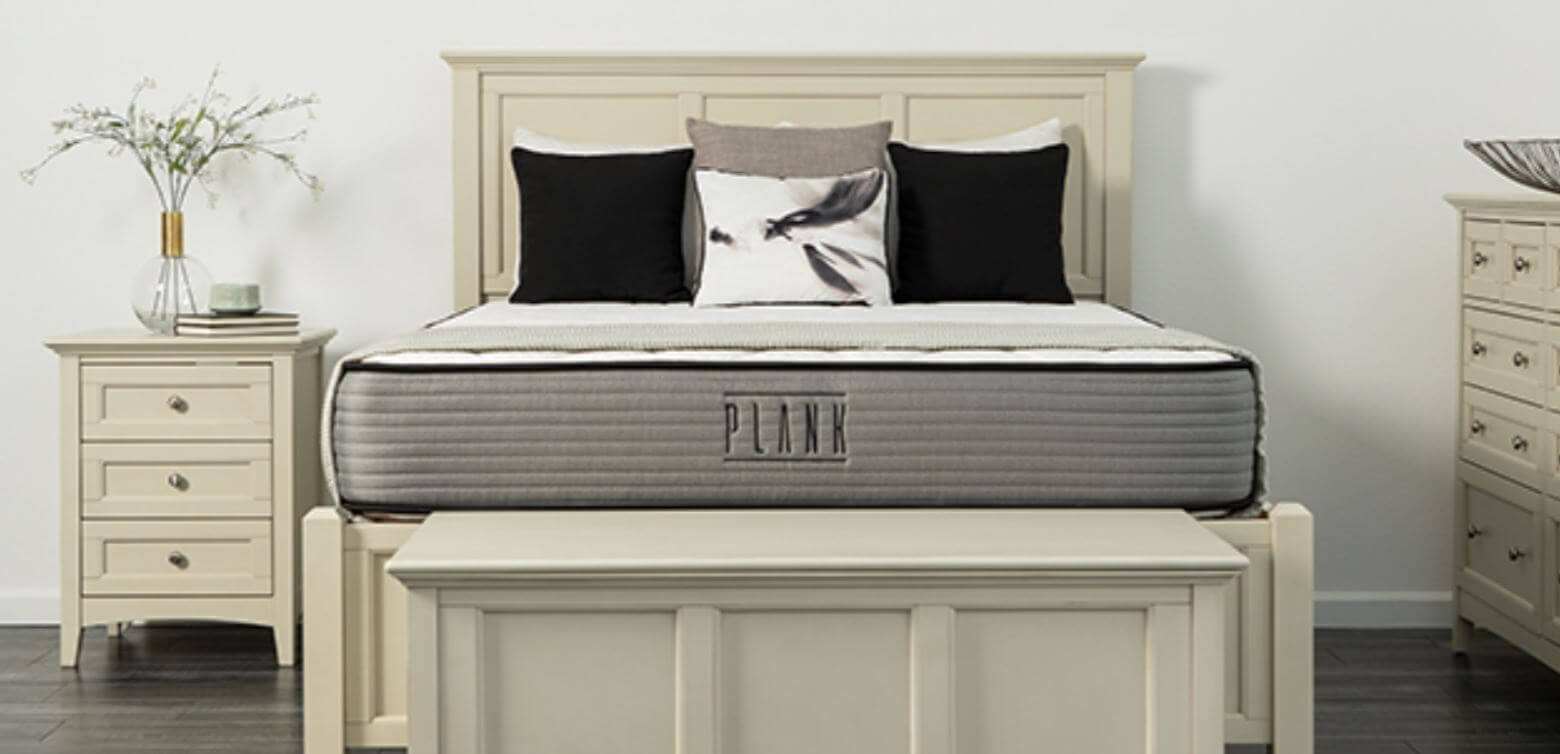 Check Price Our Review
Check Price Our ReviewThe Plank by Brooklyn Bedding comes in an all-foam or hybrid version. The all-foam version is great for eliminating motion transfer and partner disturbance. The Plank is one of the firmest foam mattresses we tested and you get the option to upgrade to a cooling top layer to help you fall asleep even faster.
We earn a commission if you make a purchase, at no additional cost to you.
-
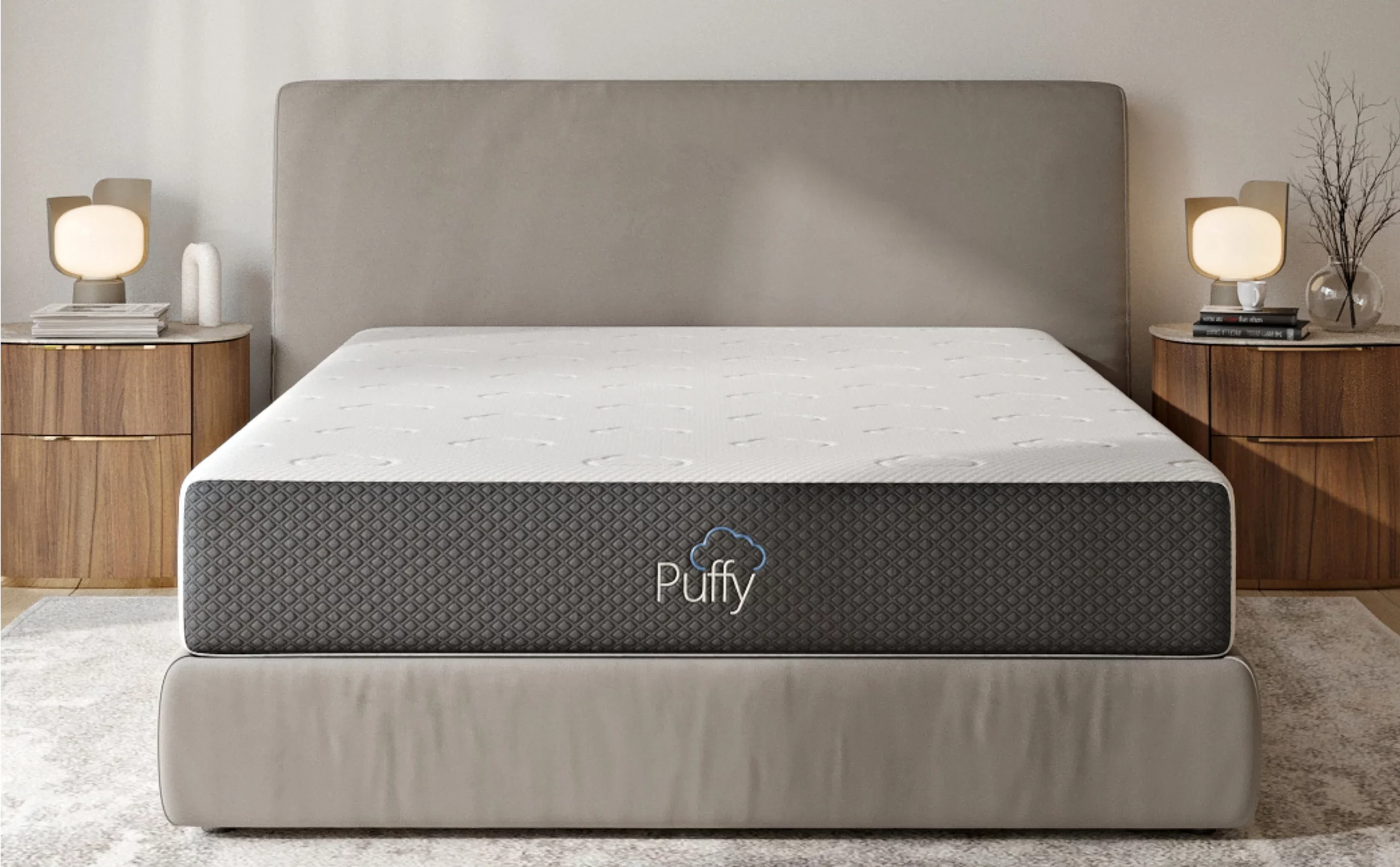 Check Price Our Review
Check Price Our ReviewThe Puffy Cloud Mattress is ranked Best Memory Foam Mattress by People Magazine, Best Memory Foam Mattress 2024 by HGTV, and Best Affordable Medium-Firm Mattress 2024 by Forbes.
-
 Check Price Our Review
Check Price Our ReviewTEMPUR material now combined with premium spring coils for the ultimate in relaxation
We earn a commission if you make a purchase, at no additional cost to you.
-
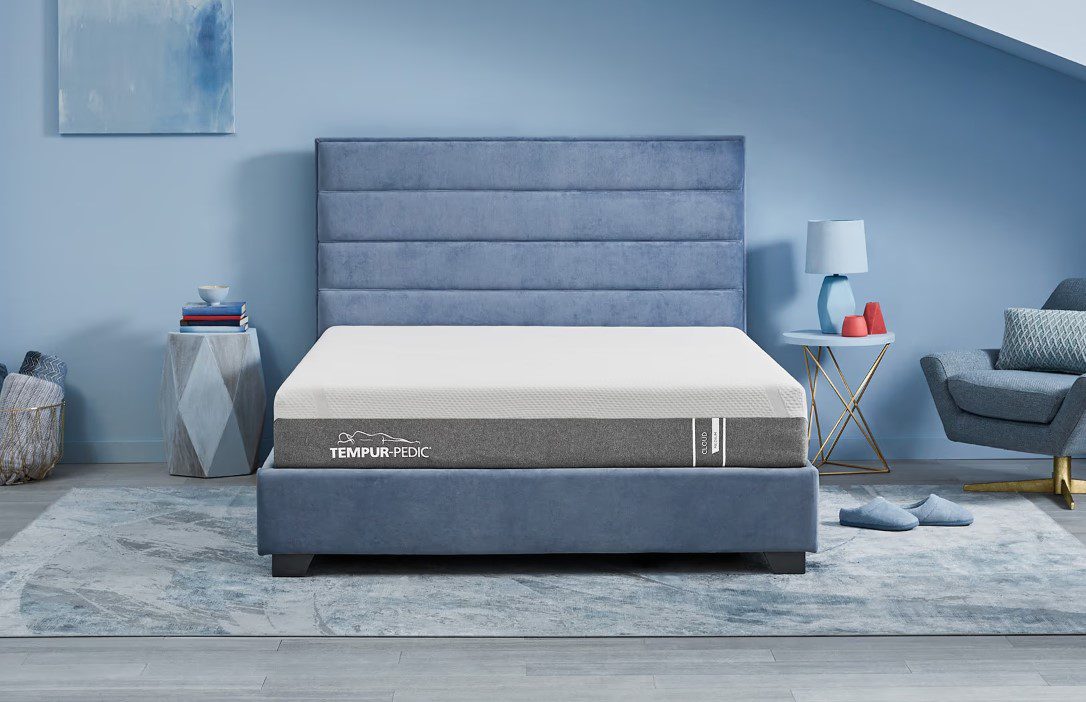 $1,399Buy Now Our Review
$1,399Buy Now Our ReviewFeaturing proprietary TEMPUR-Material designed for fast shipping & doorstep delivery.
We earn a commission if you make a purchase, at no additional cost to you.
-
 $3,949.00Buy Now Our Review
$3,949.00Buy Now Our ReviewThis isn’t ordinary memory foam. TEMPUR® materials provide unparalleled pressure relief and motion cancellation — to help you fall asleep faster and stay asleep longer.
We earn a commission if you make a purchase, at no additional cost to you.
-
 Check Price Our Review
Check Price Our ReviewT&N Adaptive foam was created based on customer feedback to provide pressure relief where you need it most. The open-cell structure offers a flexible sleep surface that responds and adjusts with you.
We earn a commission if you make a purchase, at no additional cost to you.
-
 $796 (Queen)Buy Now Our Review
$796 (Queen)Buy Now Our ReviewBounce-back support and breathability from T&N Adaptive® foam technology.
We earn a commission if you make a purchase, at no additional cost to you.
-
 Buy Now Our Review
Buy Now Our Review$591.99$519.00We earn a commission if you make a purchase, at no additional cost to you.
09/04/2025 12:12 pm GMT -
 Buy Now
Buy Now$215.50$185.28We earn a commission if you make a purchase, at no additional cost to you.
09/04/2025 02:02 pm GMT -
-
-
 Buy Now Our Review$1,299 (Queen)
Buy Now Our Review$1,299 (Queen)We earn a commission if you make a purchase, at no additional cost to you.
-
 $1,499Buy Now Our Review
$1,499Buy Now Our ReviewGood For:
- Sleepers who want conforming of memory foam with zero heat retention
- Couples who value both motion isolation & responsiveness
- Side, back and side-back combo sleepers
- Sleepers looking for a balance between bounce, motion isolation and pressure relief
We earn a commission if you make a purchase, at no additional cost to you.
-
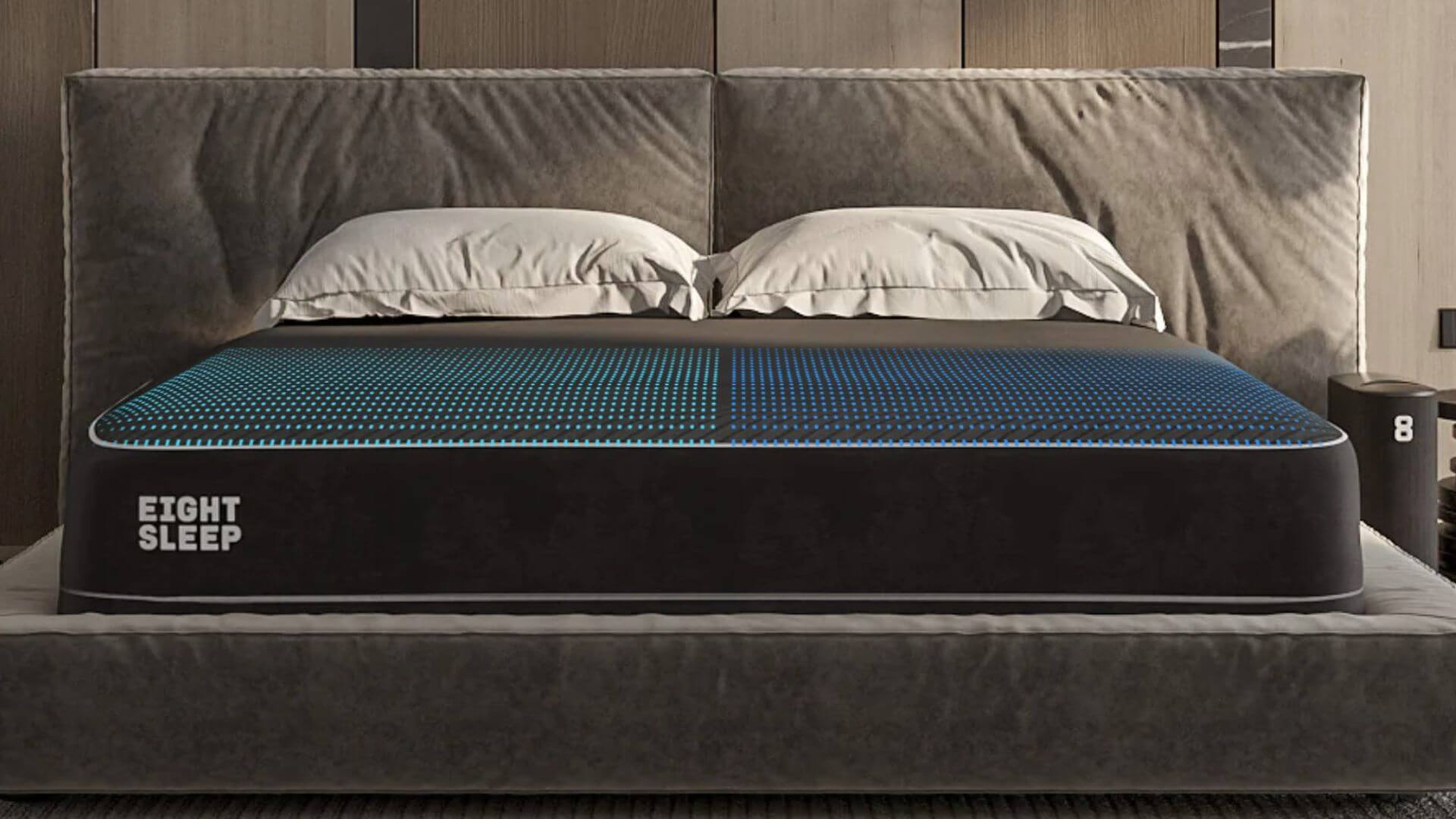 Buy Now Our Review
Buy Now Our ReviewThe only smart mattress that can adjust the temperature of the bed while you sleep. It's a game-changer. Get $200 off with coupon code sherpa200 at checkout
We earn a commission if you make a purchase, at no additional cost to you.
-
 $1,799 (Queen)Buy Now Our Review
$1,799 (Queen)Buy Now Our ReviewExperience cooler supported sleep with the WellFlex 1.0, the firmest Mlily mattress.
We earn a commission if you make a purchase, at no additional cost to you.
-
 $1,399 (Queen)Buy Now Our Review
$1,399 (Queen)Buy Now Our ReviewThe Snooze Flip™ 12'' flippable 4-in-1 mattress with reversible cover delivers the perfect customized comfort for all sleepers. Switch from Soft & Cool, to Firm & Cool, Soft & Warm, or Firm & Warm as needed and enjoy excellent support, pressure relief, and motion isolation in any sleep position thanks to our material and design innovations!
We earn a commission if you make a purchase, at no additional cost to you.
-
 Buy Now Our Review
Buy Now Our ReviewFoam, hybrid, or cooling, Casper has the right mattress that's just right for you.
We earn a commission if you make a purchase, at no additional cost to you.
-
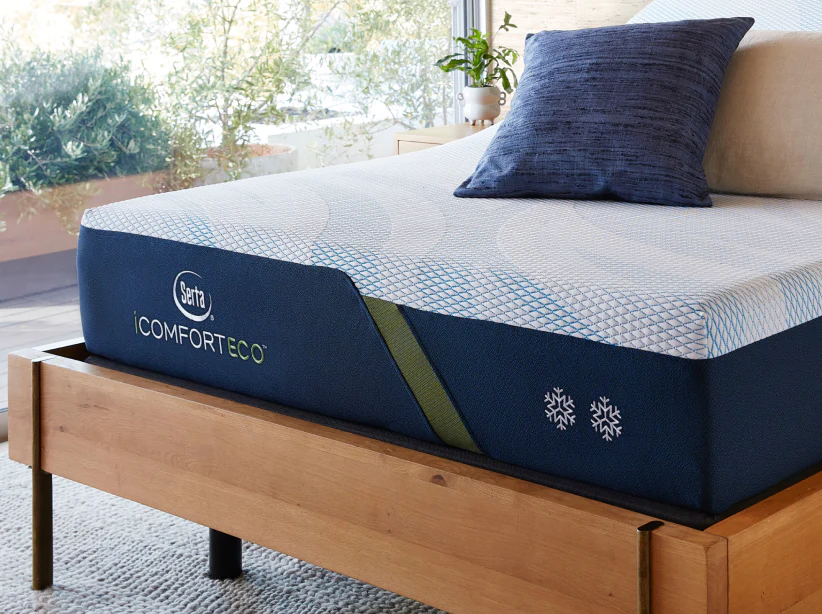 $1999 (Queen)Buy Now
$1999 (Queen)Buy NowFeaturing select materials that are up to 70% sustainable*, this supportive mattress was designed to ensure sleep is cool, comfortable, and restorative. With foam and hybrid options, there's an iComfortECO ideal for your sleep needs.
We earn a commission if you make a purchase, at no additional cost to you.
-
-
-
 $799 (Queen)Buy Now Our Review
$799 (Queen)Buy Now Our ReviewA better, more affordable memory foam mattress. American-made with our cooling, charcoal-infused, CertiPUR-US® certified memory foam and plant-based BioFoam® layers. Choose between Hybrid or all foam, for a medium soft or gentle firm feel.
We earn a commission if you make a purchase, at no additional cost to you.
-
-
 $566Buy Now Our Review
$566Buy Now Our Review- 11” height; 4 layers of comfort
- Gel-infused memory foam & non-allergenic, aerated latex for cooler sleep
- High-density support foam
- Breathable & plush knit cover
- Medium-Firm: Optimal balance for comfort & long-term support
We earn a commission if you make a purchase, at no additional cost to you.
-
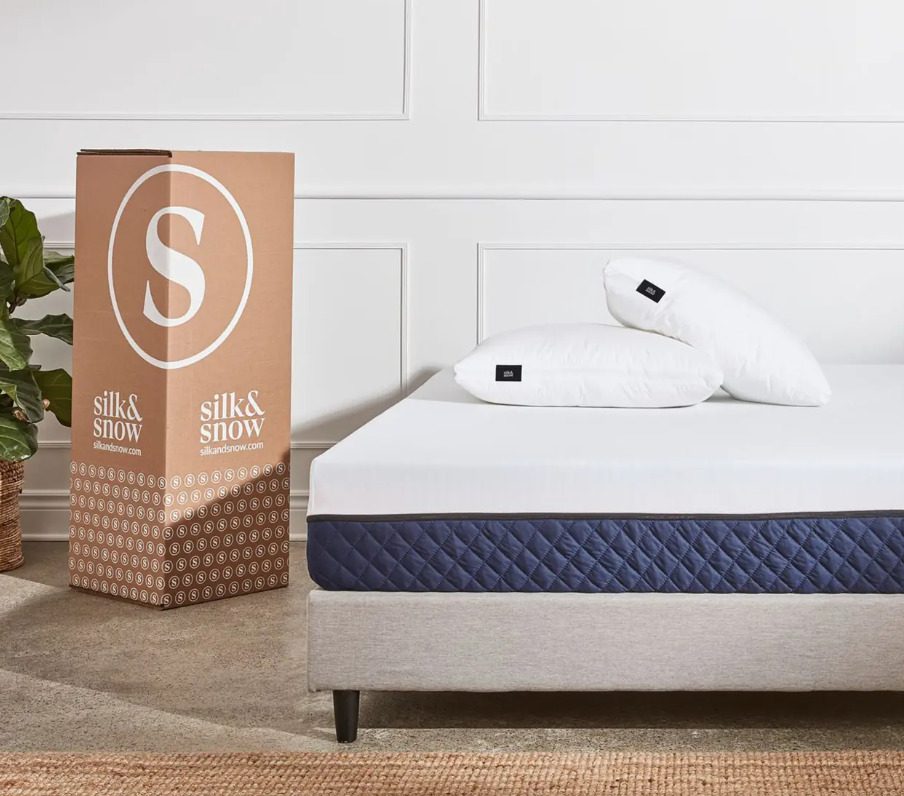 $650 (Queen)Buy Now Our Review
$650 (Queen)Buy Now Our ReviewPremium 4 lb luxury memory foam and an innovative cover design come together to create a perfect sleep environment.
We earn a commission if you make a purchase, at no additional cost to you.
-
 Buy Now Our Review$615 (Queen)
Buy Now Our Review$615 (Queen)We earn a commission if you make a purchase, at no additional cost to you.
-
 Buy Now Our Review$866 (Queen)
Buy Now Our Review$866 (Queen)We earn a commission if you make a purchase, at no additional cost to you.
-
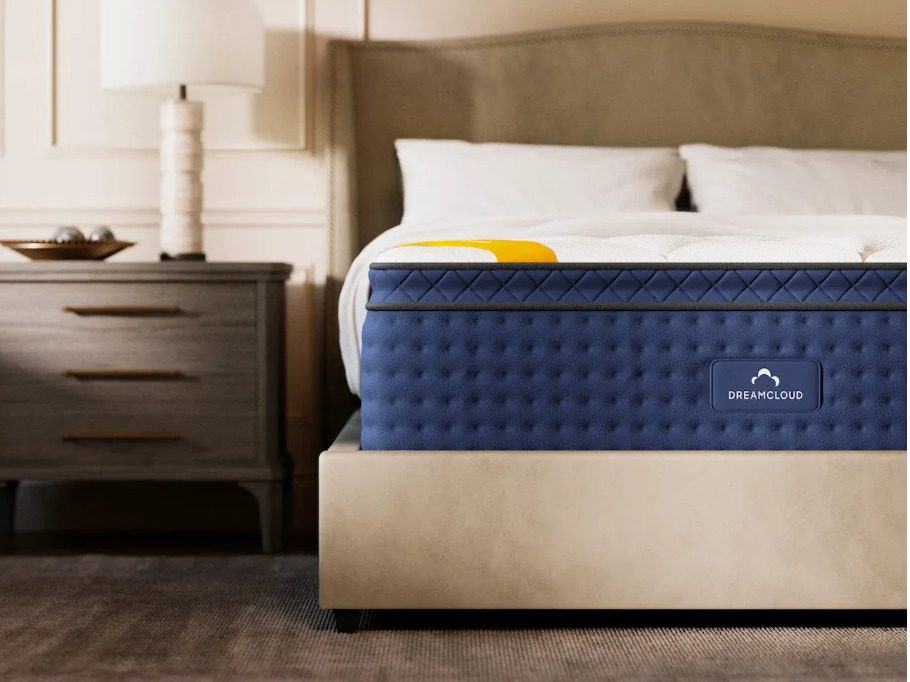 Buy Now Our Review$1,199 (Queen)
Buy Now Our Review$1,199 (Queen)We earn a commission if you make a purchase, at no additional cost to you.
-
 Check Price Our Review
Check Price Our ReviewIt's a copper mattress, it's a cooling mattress, it's a dream in a box.
We earn a commission if you make a purchase, at no additional cost to you.
-
 Buy Now
Buy Now$215.50$185.28We earn a commission if you make a purchase, at no additional cost to you.
09/04/2025 02:02 pm GMT -
 $2,105 (Queen)Buy Now Our Review
$2,105 (Queen)Buy Now Our ReviewThe Starling by Nest Bedding is a novel, all-foam luxury mattress crafted with a distinctive matrix structure to offer adaptive support and alleviate pressure points.
We earn a commission if you make a purchase, at no additional cost to you.
-
-
 Check Price Our Review$1,049.99
Check Price Our Review$1,049.99We earn a commission if you make a purchase, at no additional cost to you.
09/04/2025 07:02 am GMT -
How To Choose a Memory Foam Mattress
Memory foam has become a popular choice for mattresses, pillows, and other bedding accessories due to its unique ability to contour to the shape of the body, providing exceptional support and comfort. When selecting a memory foam product, one factor that often comes into play is the firmness level. But what do memory foam firmness numbers mean, and how can you choose the right one for your needs?
Memory foam firmness is typically rated on a scale of 1 to 10, with 1 being the softest and 10 being the firmest. This rating is based on the foam’s indentation force deflection (IFD), which measures how much pressure is required to compress the foam by a certain amount. A higher IFD indicates a firmer foam, while a lower IFD indicates a softer foam.
When choosing a memory foam product, the firmness level you select will depend on your personal preference and sleep habits. A softer foam may be more comfortable for side sleepers or those who prefer a plush feel, as it allows for greater contouring and pressure relief. On the other hand, a firmer foam may be better suited for stomach or back sleepers who require more support and spinal alignment.
Additionally, it’s important to consider factors such as body weight and sleeping position when selecting a memory foam firmness level. Heavier individuals may require a firmer foam to provide adequate support, while lighter individuals may find a softer foam more comfortable. Similarly, those who sleep on their stomach or back may benefit from a firmer foam, while side sleepers may prefer a softer foam to reduce pressure on their hips and shoulders.
Ultimately, the best way to choose a memory foam firmness level is to try out different options and determine which one feels the most comfortable and supportive for your body. Many bedding manufacturers offer trial periods or return policies, so you can test out a product before committing to a purchase. By considering your personal preferences and sleep habits, as well as taking into account factors such as body weight and sleeping position, you can select a memory foam product with the right firmness level to promote restful and comfortable sleep.
IFD and Firmness Explained
The indentation force deflection (IFD) rating for foam mattresses typically ranges from 10 to 16, with higher numbers indicating a firmer foam. However, the specific range of IFD ratings can vary depending on the type and quality of foam used in the mattress. For example, memory foam mattresses may have an IFD range of 10-15, while latex foam mattresses may have a higher range of 14-16. Additionally, some foam mattresses may feature multiple layers with different IFD ratings, allowing for a customized level of comfort and support. It’s important to keep in mind that while IFD ratings can provide a general indication of a foam mattress’s firmness level, other factors such as thickness, density, and composition can also influence the overall feel and support provided by the mattress.
Foam Density vs. Firmness
When it comes to foam, density and firmness are two distinct characteristics that can impact a product’s overall feel and performance.
Density refers to the amount of material per unit of volume in the foam. Higher-density foam typically contains more material, which can make it more durable, supportive, and resistant to wear and tear. On the other hand, lower-density foam may be softer and more lightweight, but may be more prone to compression and losing shape over time.
Firmness, on the other hand, refers to how much pressure is required to compress the foam. A firm foam will require more pressure to compress than a softer foam, and will typically spring back to its original shape more quickly.
While density and firmness are related, they are not the same thing. A foam product can be both high-density and firm, or low-density and firm, depending on the specific formulation and manufacturing process used.
When selecting a foam product, it’s important to consider both density and firmness, as they can impact the product’s overall feel and performance. For example, a high-density foam may be ideal for a mattress or chair cushion, as it will provide long-lasting support and resistance to sagging. A firm foam may be more suitable for applications such as packaging or soundproofing, where shock absorption or sound deadening are more important than comfort.
Ultimately, the choice between dense foam and firm foam will depend on the specific needs of the user and the intended application of the product. By considering both density and firmness, as well as other factors such as thickness, composition, and durability, consumers can select a foam product that provides the optimal combination of comfort, support, and performance.
Foam Densities of Popular Mattress Brands
Tempur-Pedic: The foam density in Tempur-Pedic mattresses typically ranges from 2.5 pounds per cubic foot (PCF) to 7.0 PCF, with the higher density foams used in their more premium products.
Leesa: The Leesa Original mattress features a top layer of memory foam with a density of 3.6 PCF, while the Leesa Hybrid mattress uses a higher density foam of 4.0 PCF.
Nectar: The Nectar mattress uses a memory foam with a density of 5.3 PCF, which is higher than many other popular memory foam mattresses.
Purple: The Purple mattress features a unique comfort layer made of a proprietary material known as Hyper-Elastic Polymer, which has a density of 2.0 PCF.
Amerisleep: Amerisleep mattresses feature a range of foam densities depending on the specific product. For example, the AS3 model uses a memory foam with a density of 4.0 PCF, while the AS5 model uses a higher density foam of 5.0 PCF.
Tuft & Needle: The Tuft & Needle Mint mattress uses a top layer of memory foam with a density of 4.0 PCF, while the Tuft & Needle Hybrid mattress uses a foam with a density of 2.5 PCF.
Saatva: The Saatva Loom & Leaf mattress uses a top layer of memory foam with a density of 5.0 PCF, which is considered a high density foam.
DreamCloud: The DreamCloud Premier mattress features a top layer of memory foam with a density of 4.0 PCF, while the DreamCloud Luxury Hybrid mattress uses a foam with a density of 5.0 PCF.
Helix: Helix mattresses feature a range of foam densities depending on the specific product and customization options. For example, the Helix Sunset mattress uses a memory foam with a density of 2.5 PCF, while the Helix Midnight Luxe mattress uses a foam with a density of 4.0 PCF.
Bear: The Bear Original mattress uses a top layer of memory foam with a density of 3.5 PCF, while the Bear Pro mattress uses a foam with a density of 4.0 PCF.
Layla: The Layla Memory Foam mattress features a top layer of copper-infused memory foam with a density of 3.5 PCF, while the Layla Hybrid mattress uses a foam with a density of 2.5 PCF.
GhostBed: The GhostBed 3D Matrix mattress features a top layer of a proprietary foam blend known as “Ghost Ice” with a density of 3.5 PCF, while the GhostBed Flex Hybrid mattress uses a foam with a density of 4.0 PCF.
Avocado: The Avocado Green mattress features a top layer of organic latex foam with a density of 5.0 PCF, while the Avocado Latex mattress uses a foam with a density of 4.0 PCF.
Brooklyn Bedding: Brooklyn Bedding mattresses feature a range of foam densities depending on the specific product. For example, the Brooklyn Aurora Hybrid mattress uses a memory foam with a density of 4.0 PCF, while the Brooklyn Signature mattress uses a foam with a density of 2.5 PCF.
Zenhaven: The Zenhaven mattress features a layer of 100% natural Talalay latex foam with a density of 5.0 PCF.
Puffy Lux: The Puffy Lux mattress features a top layer of memory foam with a density of 4.0 PCF, while the Puffy Royal mattress uses a foam with a density of 5.0 PCF.
WinkBeds: WinkBeds mattresses feature a range of foam densities depending on the specific product. For example, the WinkBeds GravityLux mattress uses a memory foam with a density of 4.0 PCF, while the WinkBeds EcoCloud Hybrid mattress uses a foam with a density of 5.0 PCF.
Sleep Number: Sleep Number mattresses feature air chambers that can be adjusted to your desired level of firmness. However, many Sleep Number mattresses also include foam layers with varying densities. For example, the Sleep Number 360 p6 mattress includes a memory foam layer with a density of 3.5 PCF, while the Sleep Number 360 i8 mattress uses a foam with a density of 4.0 PCF.
Beautyrest: Beautyrest mattresses feature a range of foam densities depending on the specific product. For example, the Beautyrest Harmony Lux Carbon mattress uses a memory foam with a density of 4.0 PCF, while the Beautyrest Black Hybrid X-Class Ultra Plush mattress uses a foam with a density of 2.5 PCF.
Purple Hybrid: The Purple Hybrid mattress features a top layer of the company’s proprietary Hyper-Elastic Polymer with a density of 2.0 PCF, while the second layer is made of polyurethane foam with a density of 1.8 PCF.
Allswell: The Allswell Luxe Hybrid mattress features a top layer of memory foam with a density of 2.5 PCF, while the Allswell Supreme mattress uses a foam with a density of 3.0 PCF.
Zinus: Zinus mattresses feature a range of foam densities depending on the specific product. For example, the Zinus Cooling Gel Memory Foam mattress uses a memory foam with a density of 3.0 PCF, while the Zinus Green Tea Memory Foam mattress uses a foam with a density of 2.5 PCF.
Serta iComfort: The Serta iComfort mattress collection features a range of foam densities depending on the specific model. For example, the iComfort Hybrid Quilted CF3000 mattress uses a memory foam with a density of 5.1 PCF, while the iComfort Blue Max 1000 Plush mattress uses a foam with a density of 2.5 PCF.
Memory Foam Mattress FAQ
Are memory foam mattresses too hot?
Yes, memory foam mattresses have a reputation for heat retention. Here’s why:
- Density: Memory foam is a dense material, which means there’s limited airflow within the mattress. This can lead to your body heat being trapped rather than dissipated.
- Body-conforming: Memory foam contours closely to your body, creating a “hugging” sensation. While comfortable, this can restrict airflow further and increase heat buildup.
However, not all memory foam mattresses are created equal. Here’s what to consider:
- Cooling technologies: Many newer memory foam mattresses incorporate technologies to combat heat issues, such as:
- Gel infusions to help draw heat away
- Open-cell foam structures for better airflow
- Phase-change materials that regulate temperature
- Mattress toppers: A cooling mattress topper (often made from latex or other breathable materials) can create a buffer layer and improve airflow.
- Your sleep environment: Factors like room temperature, pajamas, and bedding choice also play a big role in how cool or hot you feel.
Ultimately, whether a memory foam mattress is too hot for you depends on:
- Your personal preferences: Some people are naturally warmer sleepers.
- The specific mattress: The materials and construction of the mattress matter greatly.
If you’re worried about heat:
- Do your research: Look for memory foam mattresses with specific cooling features.
- Read reviews: Check what other customers say about heat retention with a particular mattress.
- Test it out: If possible, try lying on a mattress for an extended period before purchasing.
- Consider alternatives: Hybrid mattresses (memory foam with springs) or mattresses made of naturally cooler materials like latex could be good options.
How would you describe the feel of a memory foam mattress in terms of responding to body heat, cradling effect, and potential drawbacks compared to other mattress types?
Response to Body Heat
- Initial coolness, then heat retention: Memory foam initially feels cool to the touch. However, as your body warms it up, the material softens and conforms closely, potentially trapping heat and making you feel warmer over time.
- Technology matters: Newer memory foams often incorporate gel infusions, open-cell structures, or phase-change materials that help mitigate this heat retention to varying degrees.
Cradling Effect
- The “hug”: Memory foam is famous for its ability to contour closely to your body’s curves. It creates a feeling of being hugged or enveloped by the mattress.
- Pressure relief: This cradling effect distributes your weight evenly, leading to excellent pressure relief, especially for side sleepers or those with joint pain.
Potential Drawbacks Compared to Other Types
- Heat retention: As mentioned, heat buildup can be a concern with traditional memory foam, especially for naturally warm sleepers.
- Reduced responsiveness: Memory foam has a slower response time than springy materials like latex or innerspring. This can create a feeling of being “stuck” in the mattress and make it slightly harder to switch positions.
- Off-Gassing: Some memory foam mattresses have a noticeable chemical smell when new, especially cheaper models. This usually fades over time.
It’s important to note:
- There’s a wide range of memory foam densities and qualities. Some will feel much softer and more conforming than others.
- Consider a hybrid mattress if you want the pressure relief of memory foam but with added bounce and coolness of a coil support system.
What is the delivery process for online-ordered memory foam mattresses, including unboxing, expansion, and odor management?
Delivery
- “Bed-in-a-box”: Most online memory foam mattresses utilize the “bed-in-a-box” method. They’re compressed, rolled, and packaged for efficient shipping.
- Shipping carriers: Delivery is usually through standard ground shipping services like FedEx or UPS. Some brands offer white-glove delivery with in-room setup for an extra fee.
- Arrival time: Delivery times vary by brand and your location, but generally take a few days to a couple of weeks.
Unboxing
- Placement: Move the box to the room where you’ll use the mattress. It’s helpful to have another person assist with this.
- Unboxing: Carefully open the box and remove the rolled-up mattress.
- Cutting the plastic: Use scissors (be careful not to cut the mattress itself) to remove the outer plastic wrapping.
- Positioning: Place the mattress on your bed frame or foundation.
Expansion
- Immediate start: The mattress will immediately begin to expand but may take several hours to fully reach its final shape.
- Potential wrinkles: Some temporary wrinkling or unevenness in the cover is normal during expansion.
- Walk away: Leave the room to allow the mattress to expand fully.
Odor Management
- Off-gassing: Some memory foam mattresses may have a slight chemical odor when first unboxed. This is called off-gassing and is usually harmless.
- Ventilation: Open windows and run a fan if possible to help dissipate any odor.
- Waiting it out: The smell typically fades within a few hours or a couple of days at most.
Tips
- Follow brand instructions: Specific instructions may vary between brands, so check any included guide.
- Give it time: Allow for a full 24-48 hours for complete expansion and for any odor to completely dissipate.
- Start sleeping on it: You can usually start sleeping on the mattress right away, even if it hasn’t reached its full height yet.
What factors should be considered when shopping for a memory foam mattress, including contouring, motion isolation, temperature regulation, edge support, and ease of movement?
Key Factors
- Firmness: Memory foam mattresses come in a range of firmnesses, from plush to extra firm. Your ideal firmness depends on your sleeping position, weight, and personal preference.
- Contouring: Softer mattresses generally offer more pronounced contouring and that “hugging” feel.
- Density: Foam density is expressed in pounds per cubic foot (PCF). Higher-density foams are generally more durable and supportive.
- Contouring: Higher density foams may provide slightly less body contouring.
- Temperature regulation: Denser foams can trap more heat, though some brands offset this with technology.
- Type of Memory Foam:
- Traditional: Classic memory foam is known for its contouring but potential heat buildup.
- Gel-infused: Infusions of gel beads can help draw heat away from the body.
- Open-cell: This structure promotes better airflow for cooling.
- Thickness: Thicker memory foam layers provide deeper contouring and pressure relief, but you’ll want to ensure the foam’s density is sufficient for proper support.
- Cooling Technologies: Look for features like gel infusions, open-cell foams, breathable covers, or phase-change materials to help with temperature regulation.
- Motion Isolation: Memory foam excels at dampening movement, so if you share a bed with a restless partner, it’s a good choice.
- Edge Support: Some memory foam mattresses have weaker edges, making them less supportive when sitting or sleeping near the edge. Look for models with reinforced perimeters for better edge support.
- Ease of Movement: Memory foam can have a slower response time than other mattress materials, which might make switching positions slightly more difficult for some people.
Additional Considerations
- Budget: Memory foam mattresses have a wide price range, so set a budget before shopping.
- Sleeping position: Side sleepers usually benefit most from memory foam’s pressure relief, while stomach sleepers may need a firmer mattress for proper spinal alignment.
- Trial period and warranty: Most online mattress brands offer generous trial periods (usually 100+ nights) and warranties for peace of mind.
How does memory foam benefit couples who share a bed in terms of reducing movement across the surface?
Memory foam offers couples who share a bed several benefits in terms of reducing movement across the surface, also known as motion isolation:
- Conforming & Energy Absorption: Memory foam’s unique property is its ability to slowly conform to a person’s body shape and weight. When someone moves, the foam compresses directly under them, absorbing the energy of that movement rather than transferring it across the mattress surface.
- Minimized Ripple Effect: Unlike traditional innerspring mattresses where movement can cause a ripple effect across the bed, memory foam’s dense structure isolates movement transfer. This means one partner’s tossing and turning is far less likely to disturb the other’s sleep.
- Individual Sleep Zones: Because memory foam reacts to individual pressure, it creates a sense of separate sleep zones. This helps maintain neutral spinal alignment for each partner regardless of the other person’s movements.
Things to Consider
- Density: Denser memory foams generally offer better motion isolation.
- Thickness: Thicker memory foam layers provide more room for the material to contour and absorb motion energy.
- Heat Retention: One potential downside of memory foam is that it can trap heat. Some newer memory foams incorporate cooling technologies to combat this.
How does memory foam help in relieving joint or back pain for individuals with medical conditions like arthritis and sciatica?
Here’s how memory foam can be helpful for those suffering from joint or back pain, especially with conditions like arthritis and sciatica:
- Pressure relief: Memory foam’s most significant advantage is its ability to evenly distribute your body weight. This relieves pressure from sensitive joints and pressure points, reducing pain and discomfort.
- Contouring & Spinal Alignment: Memory foam molds to your natural curves, providing support while maintaining proper spinal alignment. This is crucial for reducing back pain and promoting healthy posture during sleep.
- Minimized motion transfer: Memory foam absorbs movement exceptionally well. This is helpful if you share a bed and your partner’s movements disturb your sleep and aggravate your pain.
- Reduced inflammation: Less pressure and better spinal alignment can improve blood flow. This may help reduce inflammation in areas affected by arthritis.
- Sciatica-specific relief: For sciatica, pressure relief in the lower back and hips can be particularly beneficial. The gentle support and contouring of memory foam might ease the compression on the sciatic nerve.
Important Considerations:
- Not a cure-all: While memory foam can provide relief, it’s not a cure for conditions like arthritis and sciatica. It’s essential to follow your doctor’s treatment plan alongside any mattress changes.
- Choose the right firmness: An overly soft mattress might lack adequate support, while a too-firm one might put more pressure on joints. Finding the right balance of support and pressure relief is key.
- Individual needs: What works for one person might not work for another. Some people with specific conditions may find memory foam less comfortable or even problematic.
It’s highly recommended to consult with your doctor or physical therapist when choosing a mattress if you have chronic pain conditions. They can advise you on the best type of mattress and support level for your specific needs.
What type of mattress is recommended for side sleepers, back sleepers, and stomach sleepers based on their body weight and sleeping position?
Here’s a breakdown of recommended mattress types for different sleeping positions and body weights:
Side Sleepers
- Goal: Pressure relief for shoulders and hips, spinal alignment
- Best Choices:
- Medium-soft to medium-firm mattresses: Offer the balance of conforming support and sinkage.
- Materials: Memory foam, latex, or hybrids with a plush top layer.
- Body Weight Considerations:
- Lighter (<150 lbs): Softer end of the spectrum for cushioning pressure points.
- Heavier (>230 lbs): Firmer options to prevent excessive sinking and misalignment.
Back Sleepers
- Goal: Support for the natural curve of the spine, even weight distribution
- Best Choices:
- Medium-firm to firm mattresses: Provide support and prevent the lower back from sinking too much.
- Materials: Hybrids, latex, innerspring with a comfort layer (but not too soft).
- Body Weight Considerations:
- Lighter sleepers: May prefer slightly softer options within the medium-firm range.
- Heavier sleepers: Will benefit from firmer support.
Stomach Sleepers
- Goal: Maintaining spinal alignment with hip support
- Best Choices:
- Firm mattresses: Prevent hips from sinking too far, leading to misalignment.
- Materials: Firmer innersprings, some hybrids with minimal comfort layers, latex.
- Body Weight Considerations:
- Heavier sleepers: May require extra-firm options for optimal support.
Important Notes:
- Personal preference: These are guidelines. Comfort is subjective!
- Hybrid mattresses: Versatile option as they often offer layers tailored for different sleeper needs.
- Pillow choice: Proper pillow height for your sleeping position is crucial for spinal health.
Where to start:
- Use mattress firmness scale: A 1-10 scale (1 being softest, 10 firmest) helps compare options.
- Online research: Brands often have guides based on sleeping position and body type.
- Test in store: Whenever possible, lie on the mattress for at least 15 minutes in your common positions.


